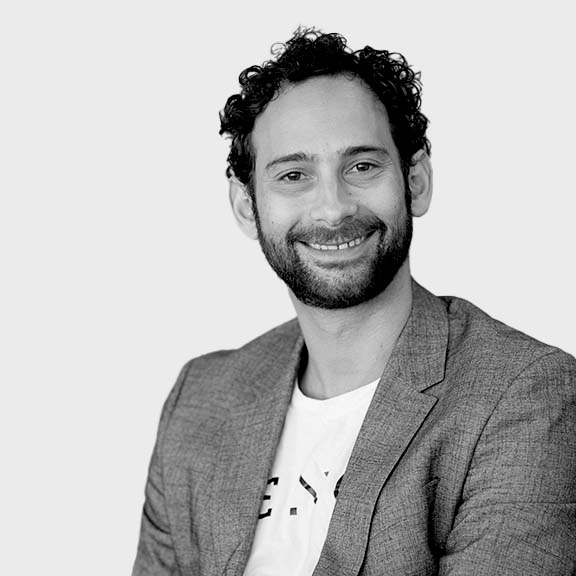We sat down with industry leaders to learn about the latest updates and developments in the Broadcast Video on Demand (BVOD) space. We hear about how BVOD has been impacted by the pandemic, its incredible value as a channel and why now is the perfect time to invest programmatically.
Chris Rooney, Programmatic Manager, Seven West Media
It has been a whirlwind past three months filled with plenty of challenges, successes, innovations and record-breaking viewership in the addressable space! What does addressable TV mean to you, and how have you viewed this time and the impact it has had on your business and the market?
Addressable TV is the ability to serve advertising to a targeted audience. If you think about broadcast TV, being a one to many environment, then Broadcast Video on Demand (BVOD) is one to one – we’re able to target using declared location and demographics.
This time has definitely had its challenges. There’s a lot of pressure on all businesses at the moment especially across all publishers. The AFL had to stop, and the Tokyo Olympics had to be pushed back a year. It was really disappointing and it was extremely hard felt. Despite these extreme challenges, I think it has brought our team closer together as we rally around our advertising partners to offer compelling solutions. We’ve had some great success with Big Brother recently so it’s nice to have a win!
What advice do you have for brands that haven’t yet invested in addressable TV marketing solutions?
It’s rare that the living room in a house isn’t designed with the TV in mind. BVOD is a unique environment as you’re advertising into the heart of a household. Not only do you achieve mass reach, you’re able to tailor your messaging towards declared demographics. We are seeing BVOD grow rapidly, which has enabled our team to acquire new and interesting content onto the 7plus platform. Over 70% of programs on 7plus are not found on our linear channels! My advice to brands who have not engaged is to think about their overall media strategy and the touch points it would have on the daily lives of their target market. Often those users will be touching a few of these streaming platforms across multiple devices.
What do you think we can expect over the second half of 2020 and beyond in terms of content and innovation? What does this mean for both brands and consumers?
Hopefully our production can kick off again and we’re able to return to our originally planned content slate. We have Big Brother wrapping up towards the end of July and then we kick off the classic Farmer Wants a Wife. The Tokyo Olympics is about a year away so given the extra time we’ve had, we will be bringing more data-led opportunities as the entire country tunes (and streams!) in.
Brands can expect more measurable results so they can truly see the immense ROI BVOD advertising brings. Consumers are going to win as we invest more into our platform such as better recommendations, more exclusive content on 7plus, and more live streaming opportunities.
Any other thoughts?
The VOD industry is really exciting and it’s growing rapidly. If any advertisers are on the fence, I encourage them to dive in. There is a lot of room for your brand to shine and there is more innovation in ad opportunities for brands happening every day.
Bernard Barry, Senior Business Development Associate, The Trade Desk
What does addressable TV mean to you, and how have you viewed this time and the impact it has had on your business and the market?
We’ve certainly had to make adjustments to how we do business. The collaboration and webinar software available today have made things so much easier. The first priority is doing our part to keep each other safe and to ensure we continue to support our clients as best we can. Once we felt our clients were ready to focus on business, our first initiative was to equip them with research to help inform media planning.
The research included an analysis on retail trends, some lessons from history from brands advertising behaviour from past crises like SARS and the GFC, and studying changes in media consumption habits. CTV and BVOD have led the field for growth, and the break-out story has been CTV. This meant at The Trade Desk, we could encourage our clients to be more selective on the impressions they buy. We’ve seen clients spend more of the budget on deals with lower CPM’s or delivering more CTV impressions against their target first- or third-party audiences.
With the market uncertainty, we saw a lot of smaller advertisers pull budgets. In late April we also saw some advertisers seize the opportunity with COVID-related brand messaging. Most sectors have turned the corner and it feels like we’re starting to return to more regular media planning and investment.
What advice do you have for brands that haven’t yet invested in addressable TV marketing solutions?
Every advertiser can see the shift to video that is underway. The challenge in TV marketing solutions lies in ensuring you reach your target audience and in effective measurement.
What I do with brands is to show how we make web and mobile device ID based audiences addressable and what we can do today with measurement. While there are currently limitations with conversion tracking and viewability, there are a huge range of other measurement options.
We can track footfall into brick-and-mortar stores, track brand uplift by linking research panel ID’s to CTV IDs and we can measure web conversions from households where the CTV impression was served.
There is also a little way to go in regards to frequency capping from an industry wide perspective, however I’m confident that between Bench and The Trade Desk we have the right tools to implement effective frequency control.
Tell us how your technology specifically adds value to the programmatic planning and buying process. Do you believe this way of planning and buying is here to stay? Why?
Our platforms objective is to spend your advertising dollars as efficiently as we can. Depending on your campaign goals, we will adjust our bidding in various ways. Broadly speaking the levers we’re pulling to maximise your investment are user-level frequency management, audience optimisation and media selection. Often these parameters are set for us in the planning stage, but there’s usually room to optimise.
We might be tasked with targeting people in market for a new car across premium video. Our job is to work out which premium video sites and placements work best, which audience segments are working best, how many ads to serve and when to serve them.
With the fragmentation of media combined with the proliferation of personal connected devices, programmatic buying is the only way to buy efficiently and it continues to get more effective, more measurable and more efficient each year.
At The Trade Desk, you are known for having some of the most powerful tech in the market when it comes to buying, specifically across connected TV. Tell us about some of the amazing features that are actionable in terms of planning (cross traditional/digital).
We announced a partnership with Samba. TV that will shortly allow us to more effectively plan around linear and traditional cable TV.
Through partnerships with most major TV manufacturers, Samba is able to access privacy compliant IP level anonymised data on TV viewing habits and ad exposures. By identifying which households have already been exposed to a certain advertisement on linear TV, we can shift those dollars to other households on CTV. We’re looking forward to working with Bench on the rollout.
What do you think we can expect over the second half of 2020 and beyond in terms of content, tech, and data innovation? What does this mean for both brands and consumers?
A big focus for H2 will be data and measurement improvements. We will also be continuing to work on initiatives to ensure we’re only allocating spend to value-add publishers, and we will focus on creating more efficient supply paths and improving transparency.
Joseph Kinchin, Director, Business Development, SpotX
What does addressable TV mean to you, and how have you viewed this time and the impact it has had on your business and the market?
Addressable TV is the ability to deliver ads within TV type content in a 1:1 manner (brand: viewer). Its capabilities go beyond the traditional linear space of one to many and is typically served over the internet onto a connected TV device (Smart TV’s and Set top boxes). Programmatic buying is ideal for this new medium as it allows for tighter targeting parameters powered by data and implemented in a fully automated fashion.
In the past three months, we’ve seen the consumption of streaming video surge and the supply of video inventory has followed pace. We have seen more consumption not only in the BVOD space but across other VOD providers outside of the traditional broadcaster such as Tubi and Crunchy Roll. While we have seen a number of new SVOD vendors enter the market in recent times, economic pressures on households will drive greater demand and adoption of AVOD vendors in the coming months.
Other verticals that have benefited in viewership from the lockdown have understandably been the finance sector where CPM compression has created significant cost efficiencies for buyers, but we expect to see a slow return to normal as the restrictions lift.
What advice do you have for brands that haven’t yet invested in addressable TV marketing solutions?
The BVOD and AVOD market can provide brands with the best of both worlds from linear TV and programmatic. As CTVs have become the hero device of the medium, brands can achieve the high quality, emotive and impactful ad experience TV is famed for. Delivering this in a programmatic ecosystem will bring you more efficiencies, more accountability and more targeting.
Scale already exists in this space with 300 million hours viewed in AU across the BVOD platforms alone and with the roll out of NBN and 5G along with the catalyst of the lockdown viewership is on an ever-increasing upward trend.
At SpotX, addressable TV means that you can harness that scale and overlay data to ensure you minimize the wastage typically seen in linear and deliver ads to the right users at the right time with the right creative. SpotX’s Audience Management Engine (AME) is built to integrate third-party, publisher and brands owned first-party data, meaning the supply you receive has been pre-filtered to match and expose the users you value most. Our Audience Lock product ensures a brand’s first-party data that’s used for campaigns is securely stored.
Finally, the channel provides traditionally light TV brands the opportunity to gain exposure in the most sought after and talked-about content. Buying spots within a Grand Final or final reality TV episode in linear typically means forking out a large budget, targeted at a broad demo. Addressable TV means you can still be within engaging content but only engage and pay for those you wish to reach.
Tell us how your technology specifically adds value to the programmatic planning and buying process. Do you believe this way of planning and buying is here to stay? Why?
SpotX delivers video ads programmatically for brands, meaning buyers can optimise in real time to the outcomes that they wish to see without making upfront commitments of spend. This allows campaigns to build more reach as buyers can set holistic frequency caps and turn away the impressions of users they’ve already reached.
The next step in video trading lies in header bidding which has already revolutionised the supply structure of digital display and will help create a healthier more efficient ecosystem. Header bidding enables buyers to see 100% of a publisher’s available inventory and thus compete for impressions against direct or sponsorships buys. This improves the quality of placements brands can buy and brings opportunity to bid for valuable users they previously may not have been able to find. This will be essential as brands start to overlay more and more data strategies in video.
How would you describe the importance that content developers are placing on providing addressable and innovative solutions for brands?
Broadcasters and publishers have always produced great content and we are now seeing them cultivate great audience data that goes beyond the soon to end cookie sets. Users understand the value exchange of great content for data and have signed up willingly to different platforms. This is essential in providing accuracy to addressability, when coupled with engaging content it can deliver powerful and persuasive messaging.
We are also seeing vendors innovate through different TV environments with Samsung Smart TV’s in the US providing in-app full screen ads delivered programmatically via SpotX across Samsungs content partners.
What do you think we can expect over the second half of 2020 and beyond in terms of content, tech and data innovation? What does this mean for both brands and consumers?
As COVID restrictions lifts and the economy reopens, we are likely to see this correlate in advertising budgets. However, brands will be cautious in how they spend those budgets and place even more scrutiny into their performance. This offers opportunity for the addressable TV space as brands will look to place TV budgets in a more targeted and accountable medium where viewership is on an ever-increasing rise.
This rise in scale and adoption will likely see vendors double-down efforts on integrating tech that enable efficient streaming of ads within live events. With a host of global sporting events postponed to 2021, it’s sure to be one thing the broadcaster will want to get right. This is just one thing that SpotX Server Side Ad Insertion (SSAI) solution via YoSpace is built for. SSAI allows for a buffer-less transition from live streamed content, to ad, then back to content, providing the same user experience as broadcast TV.
With studios now reopening and producing the content that has been put on hold we can expect a load of great content to watch later in the year and early next. Distribution will also likely evolve with more movies being released straight into OTT environments.
Any other thoughts?
In the new marketing era, video will harness the increasingly e-commerce world that consumers are utilising. Big-screen connected TV devices provide significant real estate to help produce a positive online interaction and shopping experience and I’m interested to see what innovations come to market to help achieve this.
Andrew Speed (Speedy), Group Business Manager – Programmatic, Nine
What does addressable TV mean to you, and how have you viewed this time and the impact it has had on your business and the market?
Audiences increased across BVOD in the first half of 2020 as users came to 9Now to stay up to date on coronavirus updates via news programming, while also finding entertainment options.
I saw many clients pull back on activity throughout lockdown, but we are now seeing clients begin to come back into market, and there’s a general feeling of positivity towards BVOD.
How have the numbers looked? What are the main factors contributing to the growth and what are you doing to keep the users coming back?
Numbers – you’re talking my language! The 9Now numbers have been strong over the last few months. Australia’s guilty pleasure, Married At First Sight, drove the 9Now UBs in February to a huge 4.65 million and March to 4.54 million, which have been the two highest commercial Video On Demand results since Nielsen started tracking monthly Unique Browsers (UBs). The 9Now UBs in March (4.65m), April (4.5m) & May (3.8m) were up 66%, 79% and 78%, respectively from the same period last year. Huge growth!
Since we went into lockdown Nine saw an increase in Live Streams. March-May on 9Now saw the Live Stream starts increase 63% from the same period last year. Trusted programs such as 9News, News COVID-19 specials, A Current Affair, Today and 60 Minutes drove this increase with up-to-date information.
Content in this space is king. How do you source the amazing content on your platform, and what does the immediate future look like? Nine is known for their sports content. Tell us a little about the impact of the break in sport and the future sporting slate.
Creating great content is at the core of what Nine does, and each year Nine invests upwards of $1 billion into Australian-made and -produced content.
There have been some hurdles but Married at First Sight and Lego Masters were filmed without issues. Other programs such as The Voice, Australian Ninja Warrior, The Block and Doctor Doctor have been filmed and are ready to go! Considering the climate, Nine is in a strong position with only Love Island Australia having to be pulled from the schedule in 2020.
We also have our partnership with NBC Universal, which includes US Dramas such as New Amsterdam, Pearson, The Enemy Within, Emergence and Manifest (to just name a few). If you’re a fan of reality, then programs like the Real Housewives (NY, NJ, Orange County, Dallas), Vanderpump Rules and Summer House are all housed on 9Now.
The NRL season has felt the impact of COVID-19 and been shortened from 25 to 20 games this season, plus finals. Nine has been working closely with the NRL throughout the delay and we are doing everything we can to ensure the best coverage is provided throughout the remainder of the season. Coming up in October is the Men’s T20 World Cup tournament, so that’s another one to look forward to!
What advice do you have for brands that haven’t yet invested in addressable TV marketing solutions?
With the increase in choices and fragmentation of audiences it’s more important than ever to target the right users at the right time, and do so as efficiently as possible. Nine’s BVOD data offering is built off the 9.5+ million registered users on 9Now. Having logged-in users means we can accurately target users across all devices at scale (including in the cookie-less environment of connected TVs).
My advice when considering addressable TV is to ask questions to build your confidence in the product. Our clients know their audiences inside out, and addressable TV gives them the ability to accurately target the most engaged users in premium content environments on the biggest screen in the house – with no wastage!
There really is an audience for every client from upper-funnel age/gender awareness campaigns, to mid-funnel personas via our 9Tribes right through to Intent segments from our data partners (such as Quantium (Grocery), Equifax (Finance), Ticketek (Entertainment), Red Planet (Travel) and the newly signed Near (Location) partnership).
What do you think we can expect over the second half of 2020 and beyond in terms of content and innovation? What does this mean for both brands and consumers?
We can expect Nine’s commitment to creating and curating the best content across News, Sport, Entertainment and Lifestyle to remain as strong as ever. Our mantra is to create great content, distribute it broadly and engage both users and advertisers alike – and that’s what we’ll be focusing on for the rest of the year.
Brett Islaub, NSW Digital Sales Manager, SBS
What does addressable TV mean to you, and how have you viewed this time and the impact it has had on your business and the market?
Addressable TV for me means the ability to serve unique and relevant messaging to our consumers based on data in a premium catalogue-led video environment. The last three months have been both challenging and rewarding. We have certainly seen a shift in audiences, genres and devices based on the current climate, however we have seen significant growth across SBS On Demand and consumption is up across the board. We have seen increased CTV viewing across the last three months which makes sense based on audiences moving inside and looking to catalogue-based platforms for engaging long-form entertainment.
Content in this space is king. How do you source the amazing content on your platform?
Our content teams are tapped in globally to content creators and content marketplaces so making sure we are connecting with these creators at the genesis of their idea is key. Ensuring that the content we source is representative of our charter and our purpose as a business but also ensuring that we are curating exclusive and engaging content that will widen our audiences world view, while allowing them to lean in to entertaining content.
What do you think we can expect over the second half of 2020 and beyond in terms of content and innovation? What does this mean for both brands and consumers?
In the second half of 2020 we will see a continuation of increased consumption across BVOD and SVOD platforms based on the current COVID situation and with that increased consumption of CTV. From an SBS perspective, working on an updated UI and UX for SBS On Demand as well as a steady slate of exclusive comedy and drama content to add to our catalogue-led platform will be key strategic pillars.




